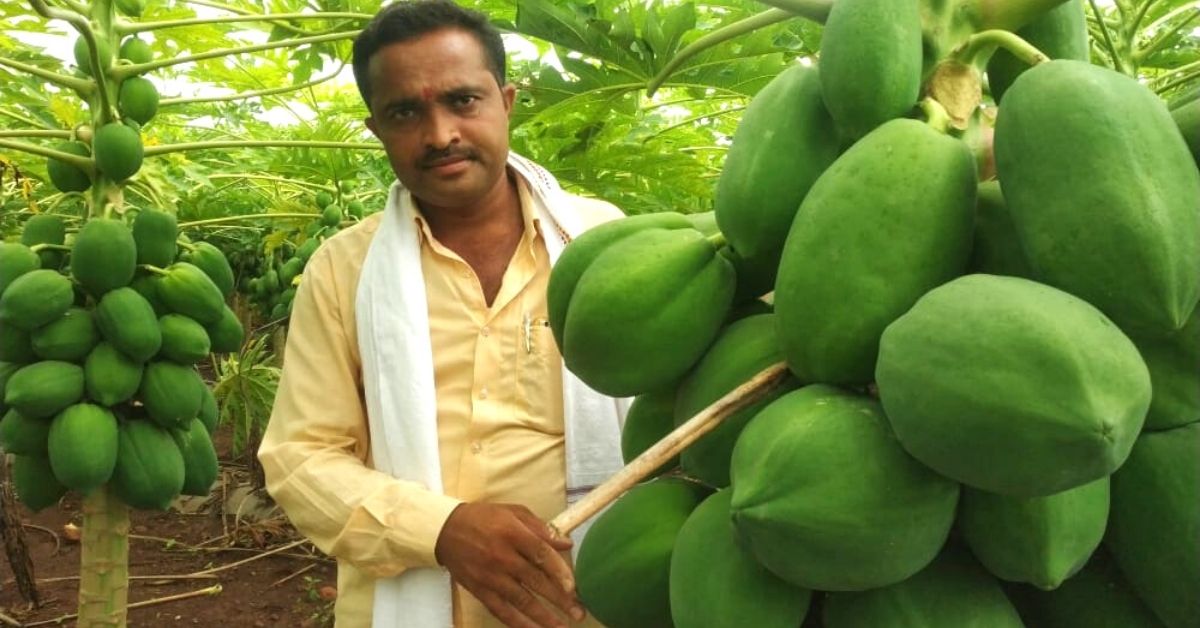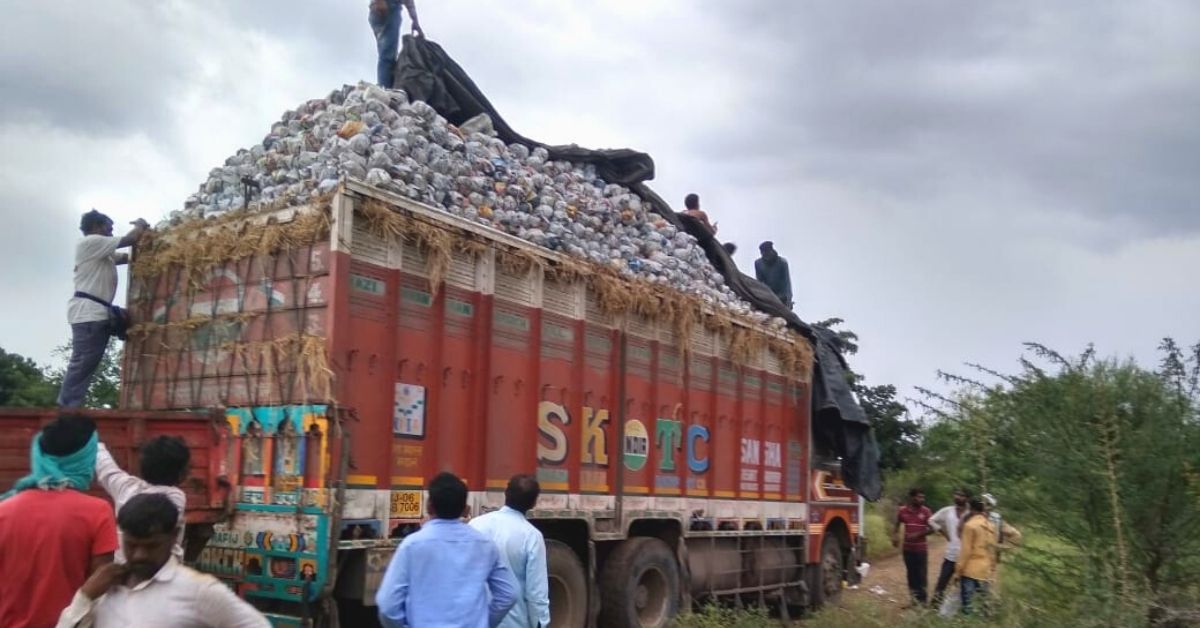Organic Farmer Makes Lakhs Growing Fruit in Drought-Prone Beed, Inspires 50 Others
This Beed farmer switched to organic farming after attending a seminar. He made a fortune growing organic papaya and watermelon

The government often struggles to convince farmers to experiment with alternative crops or new methods of planting.
As a source of steady income, farmers prefer trusted farming methods and market-friendly produce.
However, a farmer in Parali taluka of Beed district, a perennially drought-stricken area of the Marathwada region in Maharashtra, chose to break tradition and has become quite successful pioneer.
“I used to cultivate soybean, grams and other arid crops common to the region. However, a guiding session on organic farming and its success on fruit crops convinced me to try growing papaya on one acre of land,” says Sandip Gite, a farmer in Nandagoul village.
Sandip says he planted 1,000 saplings in late 2019, some of which were given to him by Mayank Gandhi, who is currently working on the empowerment of farmers in that village.

Sandip said organic techniques required less water and were a more natural or method of farming.
“The investment costs came down and also crop management became easier,” he adds.
The farmer said in seven months of the harvest, he earned Rs 3 Lakh from the crop.
“I invested Rs 1.5 Lakh on the crop and other expenses. I also planted watermelon as a complementary crop. This meant fertiliser, water and other resources were used only once, thus reducing the overall cost,” Sandip said.
The double-crop also helped Sandip to increase his income exponentially.
“I immediately extended the crop on another acre of land with the earnings and two acres has helped me earn an income of Rs 11 Lakh,” he says.
The farmer said 20 tonnes of papaya was produced and he sold it in different parts of the state.
The success became the talk of the village and soon other farmers wanted to experiment with the same.
A group of eight farmers that was formed in January 2020, which has now expanded to about 50 farmers. The farmers are also trying to grow other fruit varieties.
“A total of about 150 acres of land is used for fruit plantations now. Papaya is cultivated in about 40 acres of land and the remaining land is used to cultivate other fruit varieties like custard apple, guava, sweet lime, lemon, and mango,” Sandip said.

Another farmer, Dnyanoba Gite, also replicated the same technique.
“I used the same technique as Sandip’s on three-acre land and earned three lakhs so far by selling six tons of produce in Delhi. The fruit is still getting harvested and I hope to have a good income in future,” he adds.
Subhash Gite, a farmer cultivating custard apple and papaya said, “The idea to cultivate other fruit varieties is to ensure they supplement each other, and some produce is received every few months.”
Subhash said this would ensure more than two harvests in a year.
Subhash said such experiments could help bring hope and reduce the rate of farmer suicides in the region.
Dilip Zende, joint director of the agriculture department (Pune division) said, “Many such experiments are being reported by farmers earning a good amount of money.”
Dilip said there are different techniques used by farmers and the government is also trying to study their success and benefits in the long run.
(Edited by Vinayak Hegde)
If you found our stories insightful, informative, or even just enjoyable, we invite you to consider making a voluntary payment to support the work we do at The Better India. Your contribution helps us continue producing quality content that educates, inspires, and drives positive change.
Choose one of the payment options below for your contribution-
By paying for the stories you value, you directly contribute to sustaining our efforts focused on making a difference in the world. Together, let’s ensure that impactful stories continue to be told and shared, enriching lives and communities alike.
Thank you for your support. Here are some frequently asked questions you might find helpful to know why you are contributing?


This story made me
-
97
-
121
-
89
-
167













